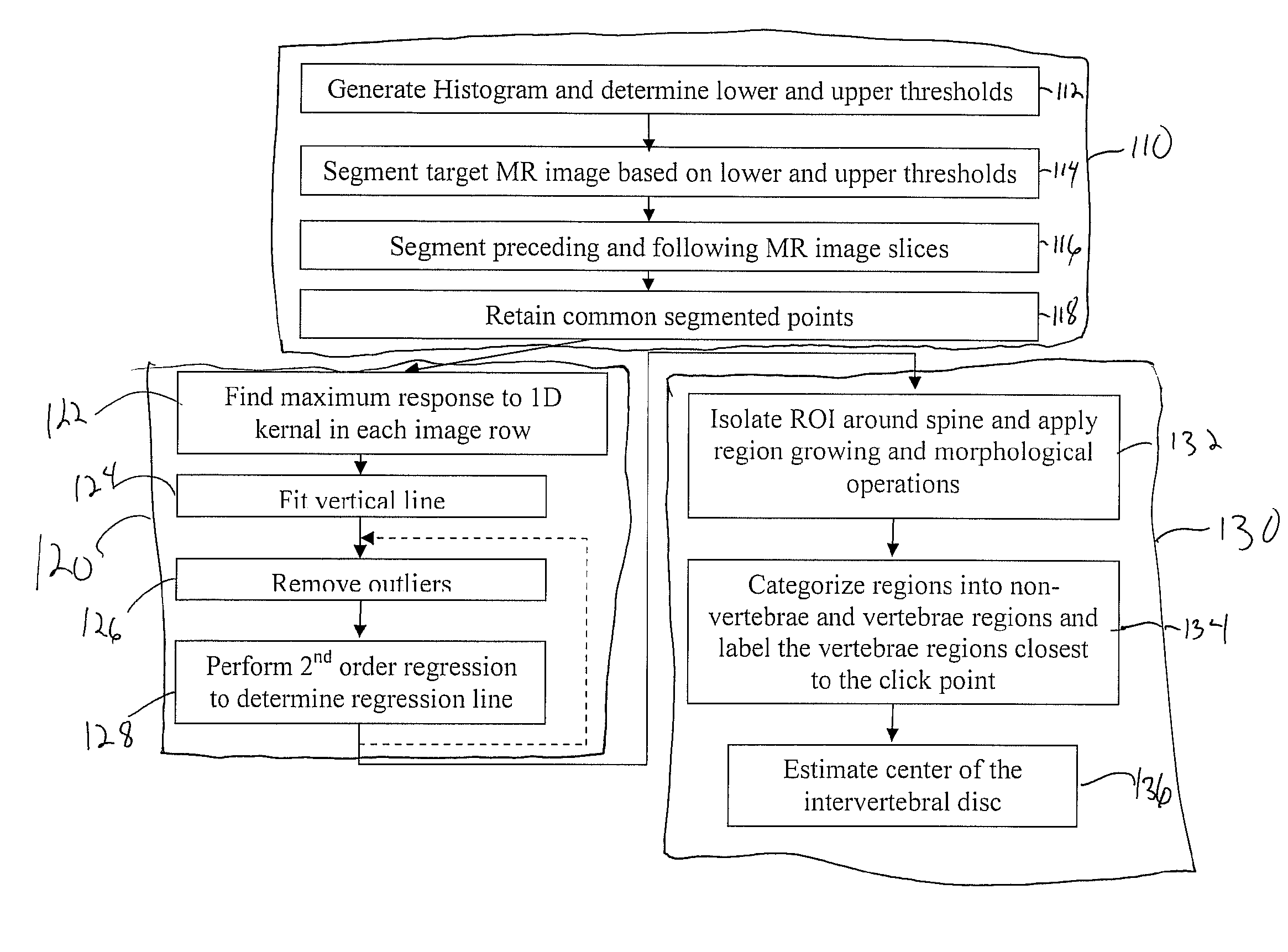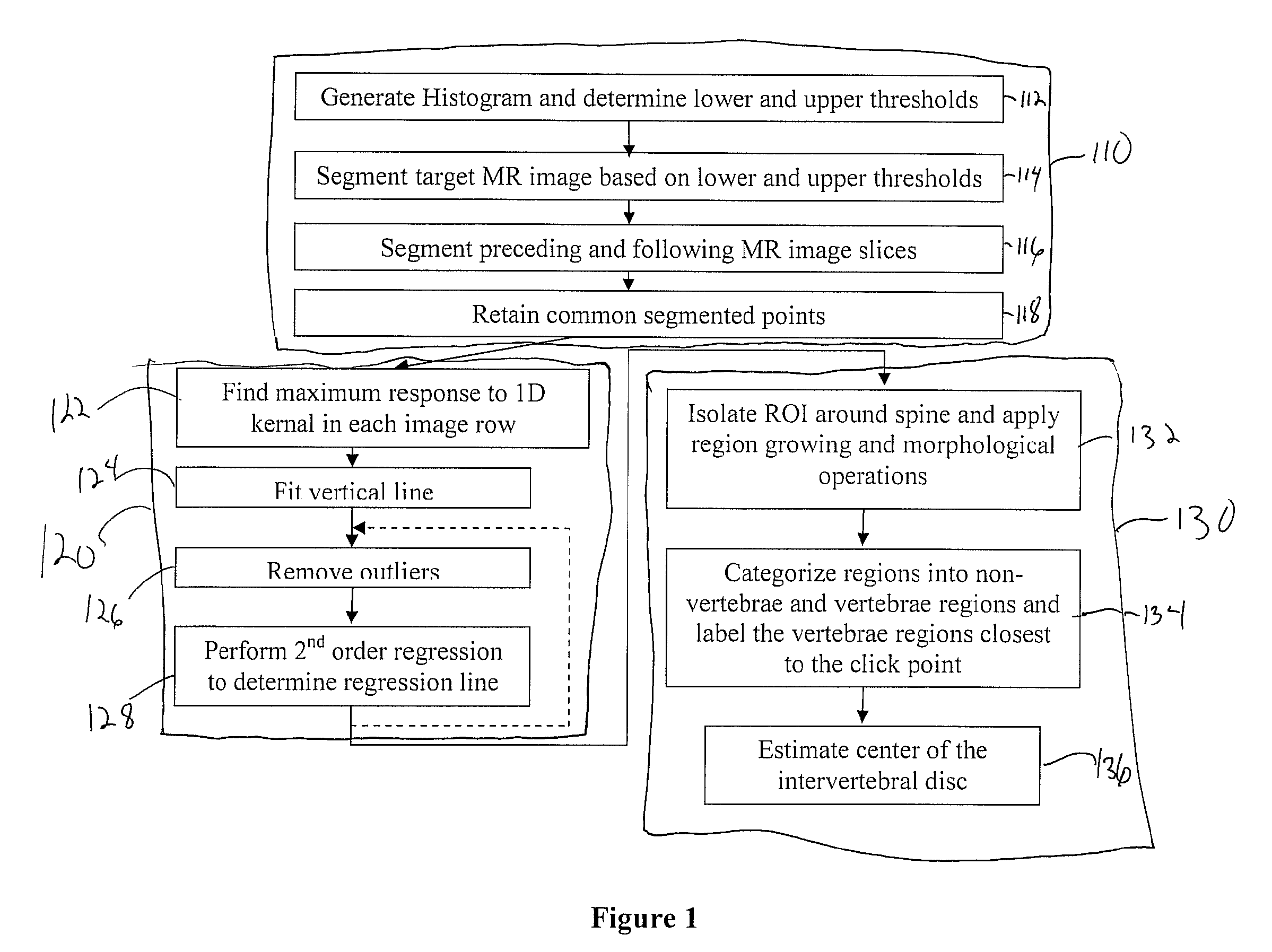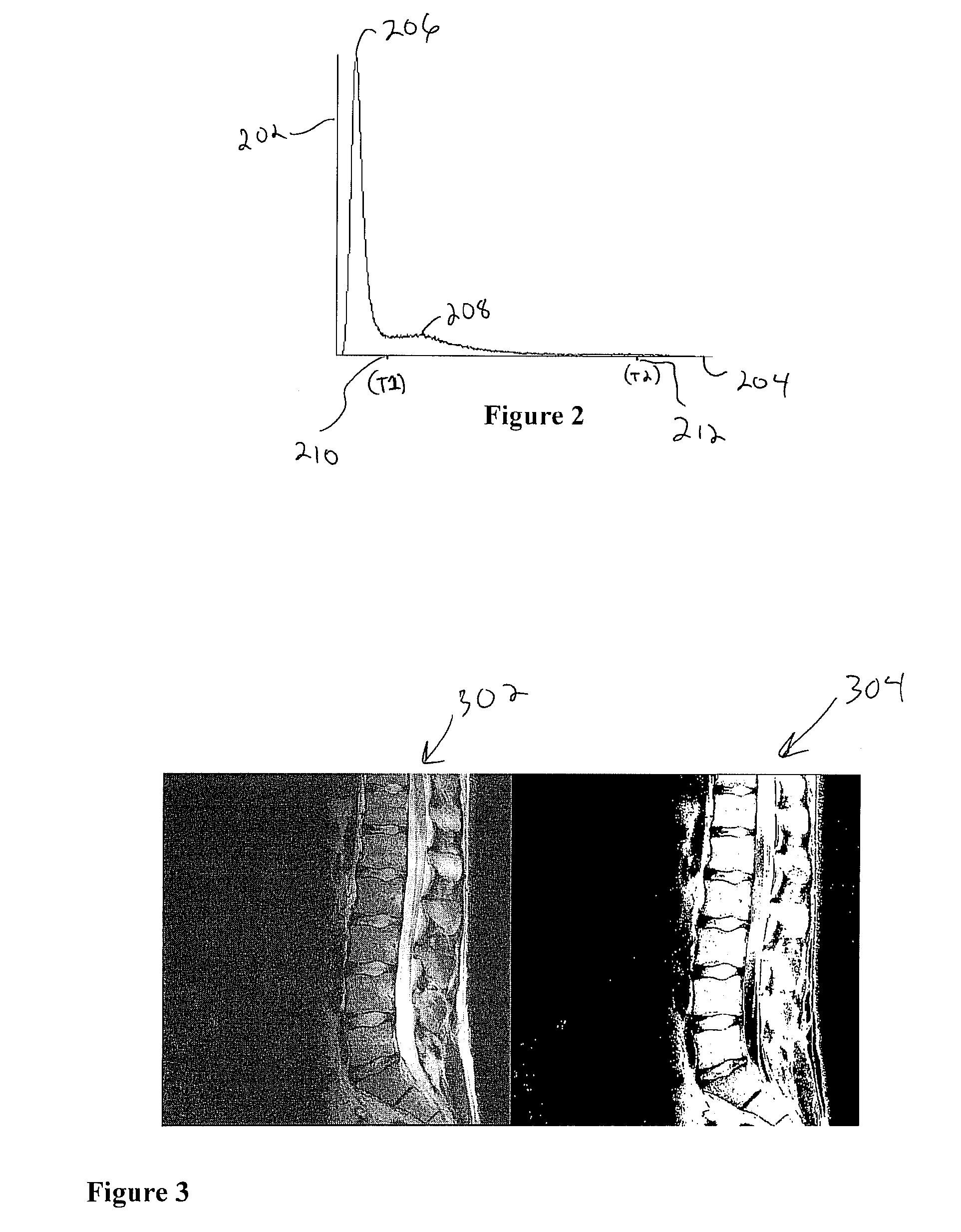Method and system for vertebrae and intervertebral disc localization in magnetic resonance images
a magnetic resonance and image technology, applied in image enhancement, image analysis, instruments, etc., can solve the problems of inconsistent results, tedious manual determination of optimal disc plane, and prone to operator variation, and achieve quick and robust localization
- Summary
- Abstract
- Description
- Claims
- Application Information
AI Technical Summary
Benefits of technology
Problems solved by technology
Method used
Image
Examples
Embodiment Construction
[0017] The present invention is directed to a method for vertebrae and intervertebral disc localization in magnetic resonance (MR) images. This method is described below in terms of manipulating the MR images. One skilled in the art may recognize that such manipulations may be, in various embodiments, virtual manipulations performed on data representing the MR images, and accomplished in the memory or other circuitry / hardware of a computer system.
[0018]FIG. 1 is a flowchart illustrating a method of determining the location of vertebrae and intervertebral discs in an MR image slice according to an embodiment of the present invention. Referring to FIG. 1, the method can be divided into preliminary spine segmentation (110), spine localization (120), vertebrae and intervertebral disc determination (130). FIG. 1 illustrates steps for performing each portion of this method, which are described in greater detail below.
[0019] During preliminary spine segmentation (110), a binary segmentat...
PUM
 Login to View More
Login to View More Abstract
Description
Claims
Application Information
 Login to View More
Login to View More - R&D
- Intellectual Property
- Life Sciences
- Materials
- Tech Scout
- Unparalleled Data Quality
- Higher Quality Content
- 60% Fewer Hallucinations
Browse by: Latest US Patents, China's latest patents, Technical Efficacy Thesaurus, Application Domain, Technology Topic, Popular Technical Reports.
© 2025 PatSnap. All rights reserved.Legal|Privacy policy|Modern Slavery Act Transparency Statement|Sitemap|About US| Contact US: help@patsnap.com



